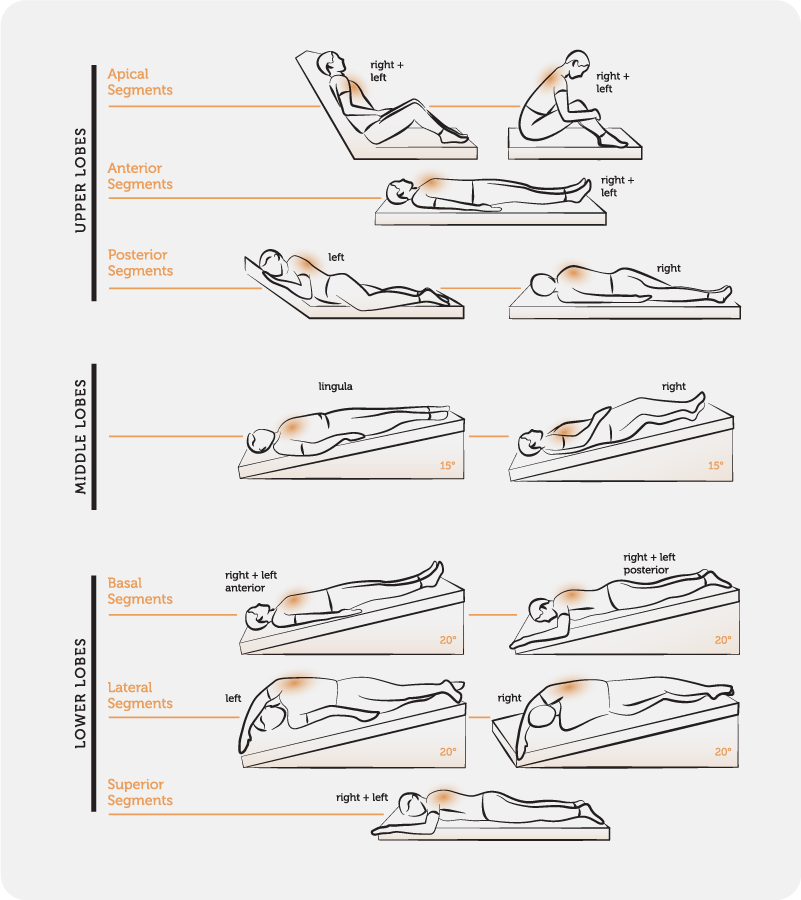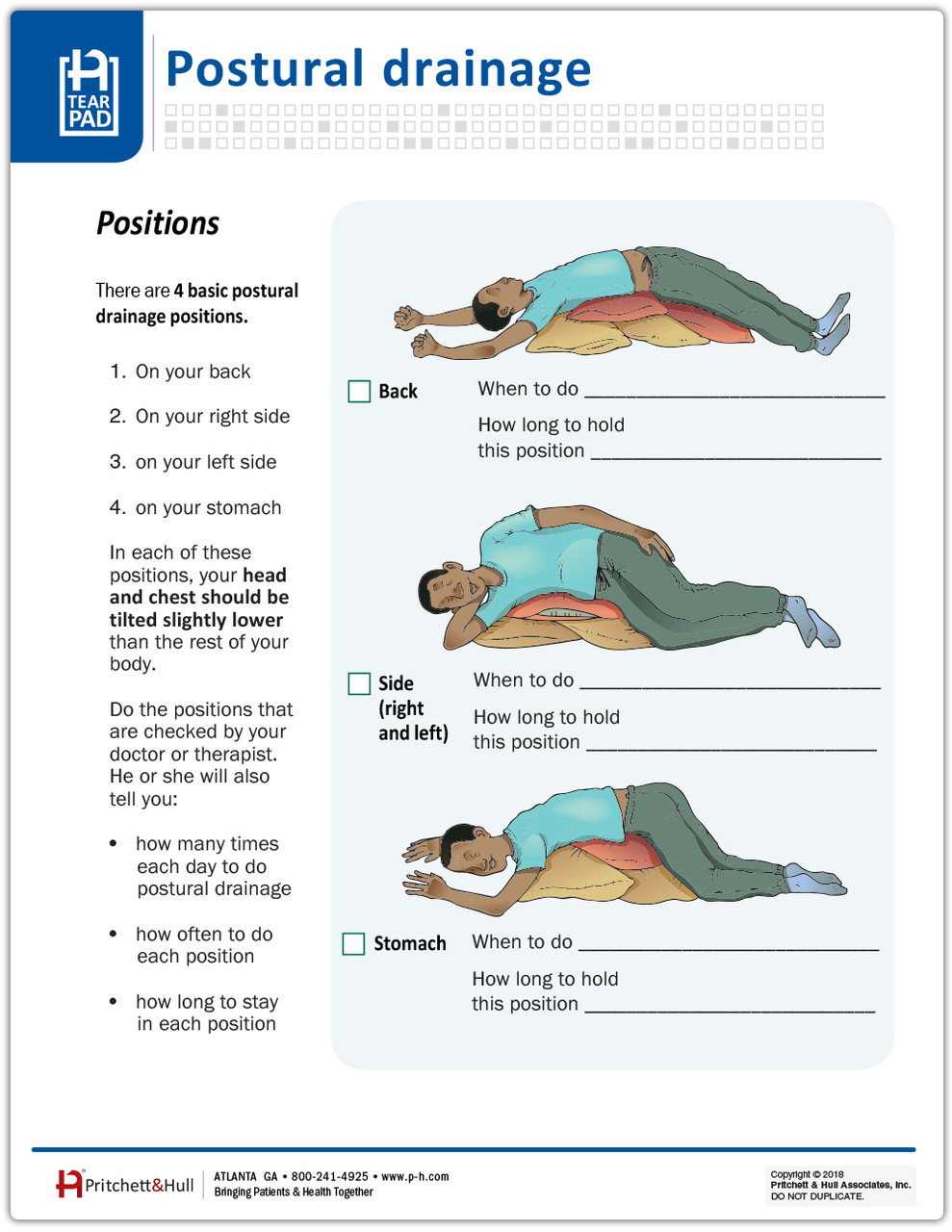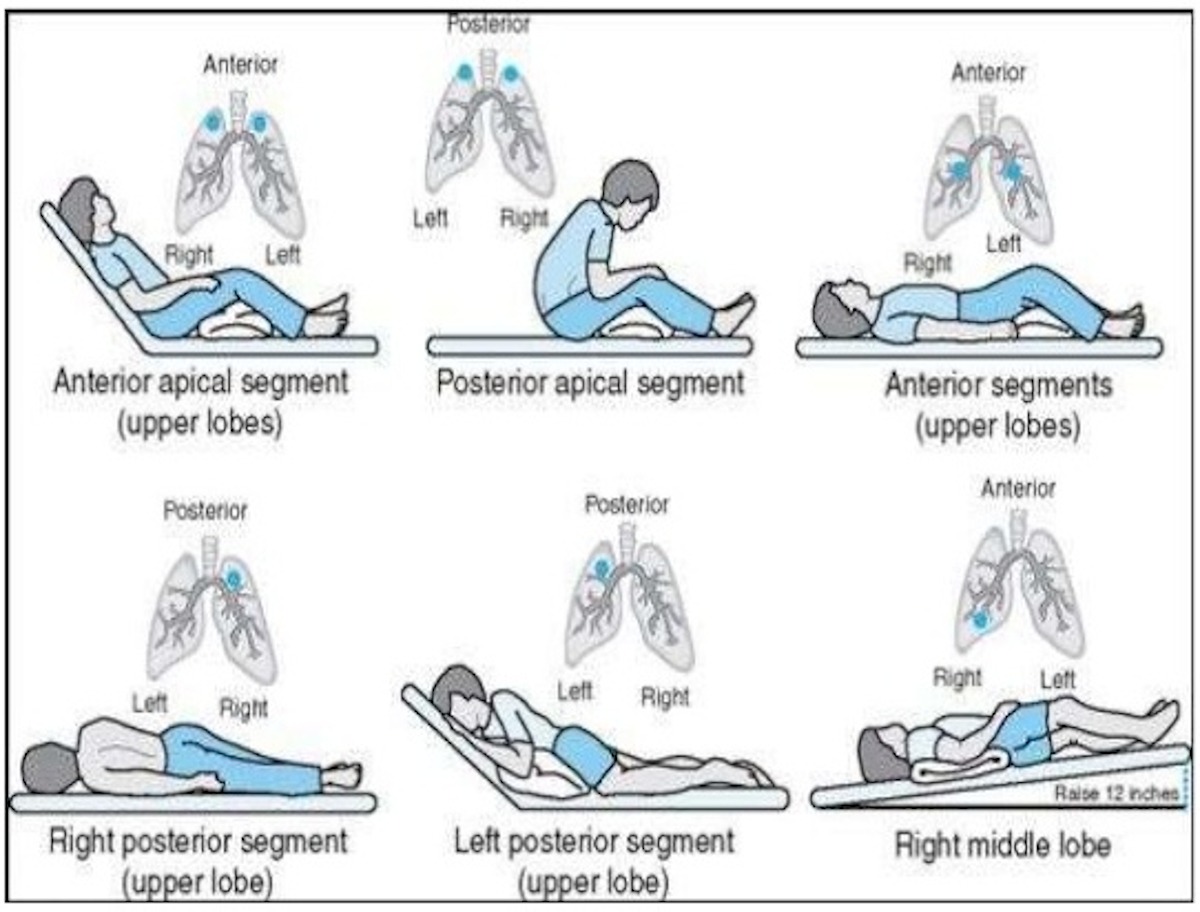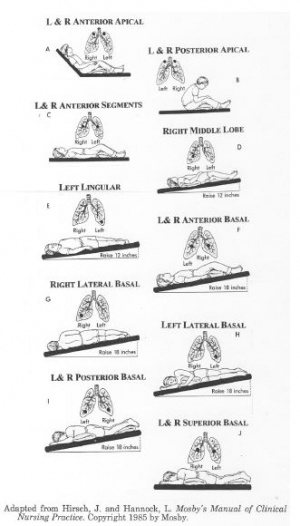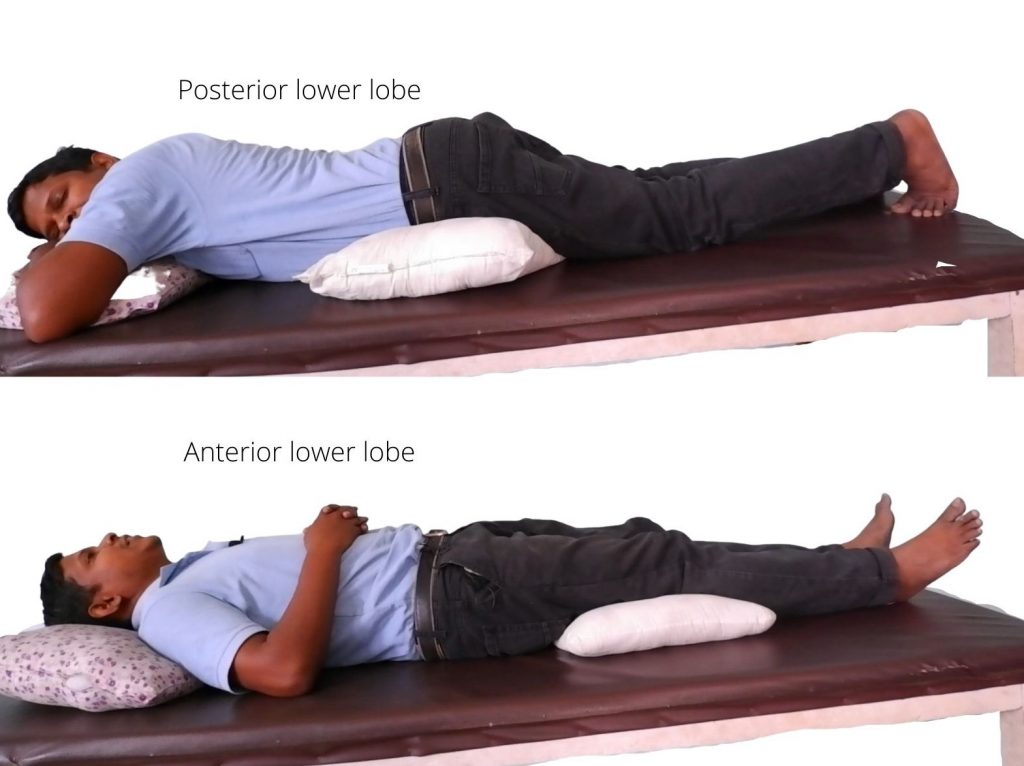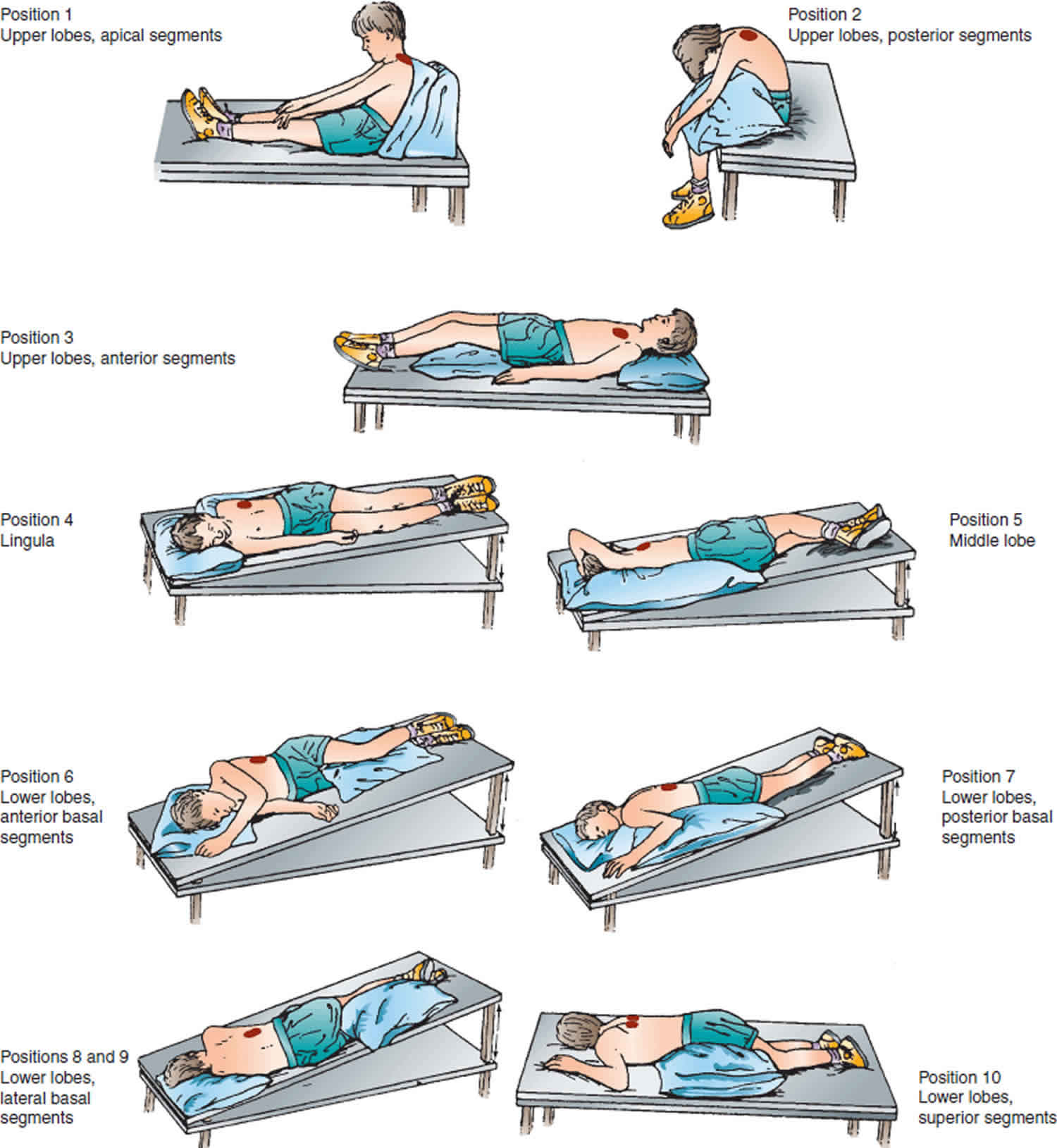How To Remember Postural Drainage Positions

The human body, a complex network of interconnected systems, sometimes requires assistance to maintain optimal function. For individuals with respiratory conditions, postural drainage stands as a crucial technique to clear excess mucus from the lungs. However, remembering the various positions and their corresponding lung segments can be a daunting task for both patients and caregivers, potentially hindering the therapy's effectiveness.
This article delves into effective strategies for memorizing postural drainage positions, drawing from expert recommendations and established medical practices. We'll explore mnemonic devices, visual aids, and practical tips to help simplify the learning process, ensuring that this vital therapy is implemented correctly and consistently. Ultimately, mastering these positions empowers individuals to take control of their respiratory health and improve their overall quality of life.
Understanding Postural Drainage
Postural drainage utilizes gravity to help drain mucus from specific lung segments into the larger airways, where it can be coughed up more easily. The technique involves positioning the body in various orientations, each designed to target a particular area of the lungs. Proper positioning is paramount for effective mucus clearance.
Without correct execution, the therapy might be ineffective or even detrimental. Understanding the rationale behind each position is the first step in memorization.
The Challenges of Memorization
The complexity of postural drainage lies in the number of positions and their relation to specific lung segments. Each position corresponds to a different lobe or segment of the lungs, requiring a clear understanding of respiratory anatomy. Furthermore, remembering the duration and sequence of each position adds another layer of complexity.
For patients with cognitive impairments or limited mobility, the challenge can be even greater. Caregivers, often without formal medical training, also face the difficulty of learning and applying the technique correctly.
Strategies for Effective Memorization
Several strategies can significantly improve the memorization and application of postural drainage positions. These techniques range from mnemonic devices to practical, hands-on approaches.
Mnemonic Devices
Mnemonic devices are memory aids that use associations to help remember information. For example, acronyms can be created to represent the order of positions. Consider developing a personalized mnemonic that resonates with individual learning styles.
Using rhymes or songs can also aid in memorization, especially for younger patients or those with auditory learning preferences. These tools can transform a complex set of instructions into something more manageable and memorable.
Visual Aids
Visual learners often benefit from using diagrams and charts that illustrate each postural drainage position and its corresponding lung segment. Color-coding the lung segments and using arrows to indicate the direction of drainage can enhance understanding. Printable resources from reputable organizations like the American Lung Association can be invaluable.
Another approach is to use photographs or videos demonstrating each position. These resources can provide a clear visual reference and help avoid confusion.
Hands-On Practice
The best way to learn postural drainage positions is through hands-on practice. Working with a respiratory therapist or physical therapist allows for direct feedback and correction of technique. Regular practice sessions help reinforce the learned positions and build confidence.
Role-playing can also be beneficial, with one person acting as the patient and the other as the caregiver. This allows for a practical application of the learned information in a simulated environment.
Association with Daily Activities
Linking postural drainage positions to everyday activities can make them easier to remember. For instance, associate a certain position with a specific time of day or a particular household chore. This can create a mental anchor that triggers the memory of the position.
Integrating the therapy into a daily routine can also promote consistency and adherence. Consistency is key for maximizing the benefits of postural drainage.
Utilizing Technology
In the digital age, several apps and online resources offer tools to help remember postural drainage positions. Some apps provide interactive diagrams, videos, and reminders to facilitate learning and adherence. Others allow users to track their progress and monitor their respiratory symptoms.
These technological aids can be particularly helpful for tech-savvy individuals or those who prefer self-directed learning.
Tips for Caregivers
Caregivers play a crucial role in assisting patients with postural drainage. Patience and clear communication are essential for successful implementation. Break down the instructions into smaller, more manageable steps. Provide positive reinforcement and encouragement to the patient.
Attend training sessions offered by healthcare professionals to gain a thorough understanding of the technique. Seek clarification on any doubts or concerns. Remember to prioritize patient safety and comfort.
Expert Perspectives
According to respiratory therapists, the most common mistake in postural drainage is incorrect positioning. They emphasize the importance of proper alignment and support to ensure effective mucus clearance. Regular assessment by a healthcare professional is recommended to adjust the therapy as needed.
"Patient education is paramount," says Dr. Emily Carter, a pulmonologist at the University of California, San Francisco. "Empowering patients and caregivers with the knowledge and skills to perform postural drainage correctly is crucial for improving respiratory outcomes."
The Future of Respiratory Care
Advancements in technology are paving the way for more sophisticated methods of mucus clearance. High-frequency chest wall oscillation (HFCWO) devices and other airway clearance techniques are gaining popularity. However, postural drainage remains a valuable and cost-effective option, particularly in resource-limited settings.
The integration of virtual reality and augmented reality technologies could revolutionize the way postural drainage is taught and practiced. These technologies could provide immersive, interactive simulations that enhance understanding and improve technique.
Conclusion
Remembering postural drainage positions requires a combination of understanding, memorization, and practice. By employing mnemonic devices, visual aids, hands-on training, and technological tools, both patients and caregivers can master this vital technique. Continued research and innovation in respiratory care promise to further enhance the effectiveness and accessibility of airway clearance therapies, empowering individuals to breathe easier and live healthier lives. Always consult with a healthcare professional before starting any new treatment regimen.



